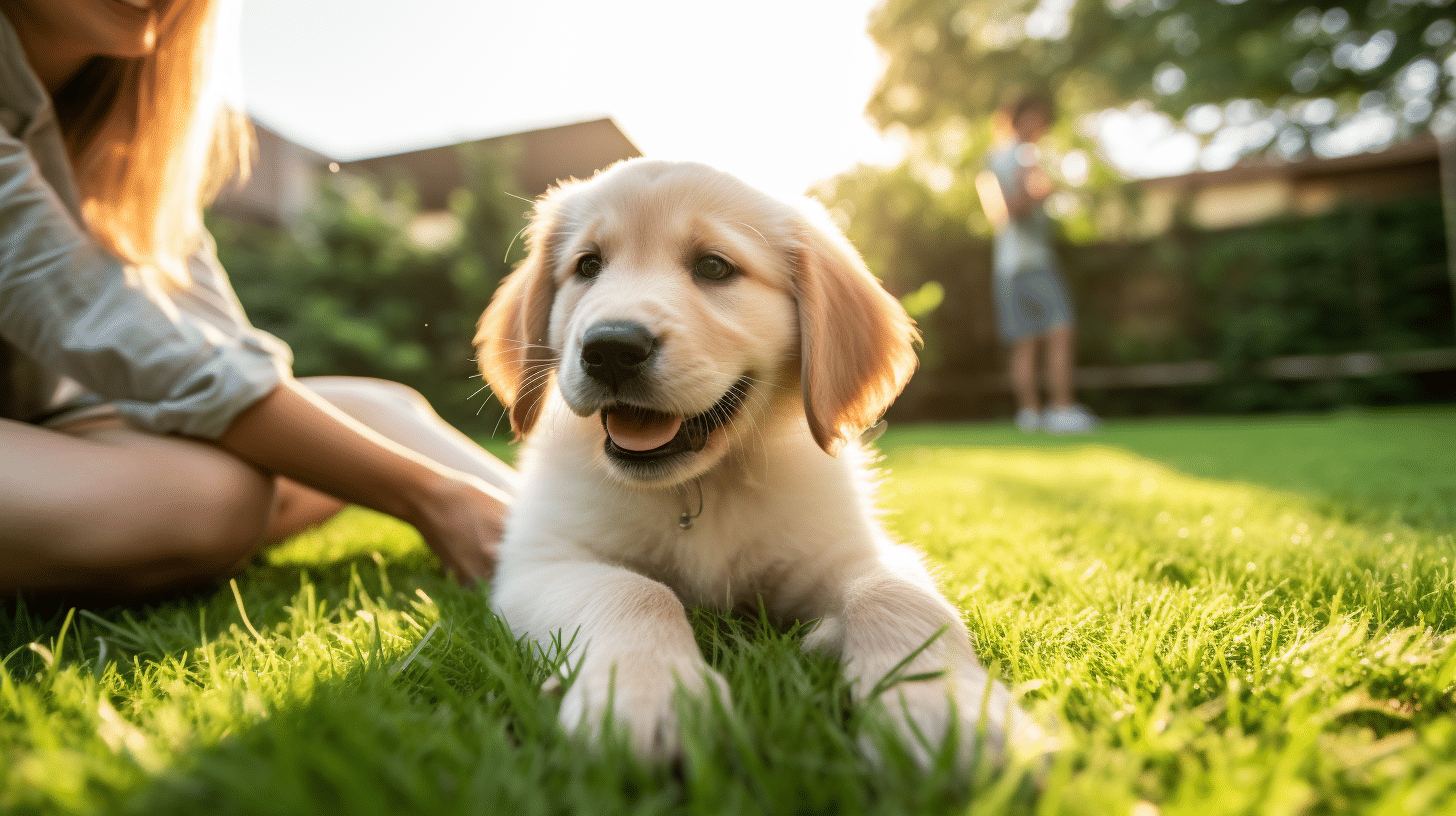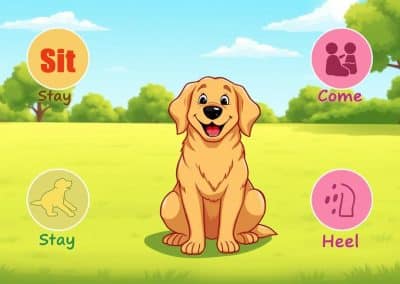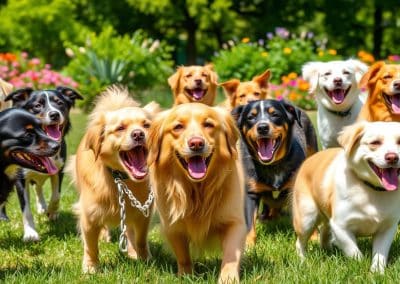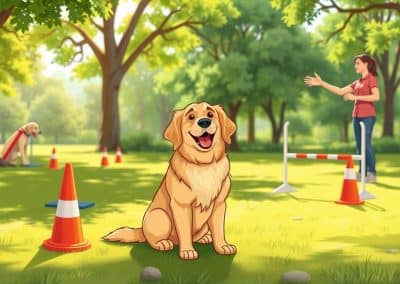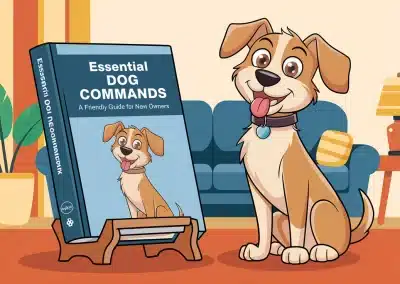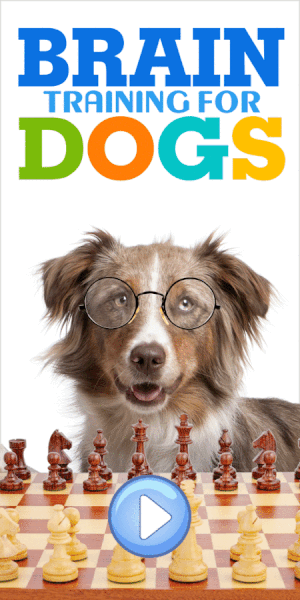Training your Golden Retriever puppy can be a fun and rewarding experience for both you and your furry friend. Golden Retrievers are known for their friendly and eager-to-please personalities, Training your Golden Retriever puppy can be a fun and rewarding experience for both you and your furry friend. Golden Retrievers are known for their friendly and eager-to-please personalities which can make them relatively easy to train. However, like any puppy, they require proper guidance, patience, and consistency to develop good habits and behavior.
Understanding your Golden Retriever puppy is the first step in successful training. Golden Retrievers are social dogs and require plenty of attention, exercise, and socialization to thrive. Basic obedience training, positive reinforcement, and leash training are essential components of puppy training. Additionally, crate and potty training, socialization and behavior training, and understanding and handling fear stages are crucial for developing a well-behaved and confident puppy.
Key Takeaways
- Proper socialization, exercise, and attention are crucial for your Golden Retriever puppy’s development.
- Basic obedience training, positive reinforcement, and leash training are essential components of puppy training.
- Crate and potty training, socialization and behavior training, and understanding and handling fear stages are crucial for developing a well-behaved and confident puppy.
Understanding Your Golden Retriever Puppy
As a proud owner of a Golden Retriever puppy, I can tell you that they are one of the most popular and people-oriented breeds out there. They are intelligent dogs that love to please their owners and are eager to learn new things.
When it comes to training your Golden Retriever puppy, it’s important to understand their breed characteristics. Goldens are known for their friendly and outgoing personalities, which makes them great family pets. However, they can also be quite stubborn at times, which can make training a bit of a challenge.
One thing to keep in mind is that Golden Retriever puppies have a lot of energy. They love to run and play, and they need plenty of exercise to keep them happy and healthy. If you don’t give them enough exercise, they may become destructive or develop behavioral problems.
Another important thing to understand about Golden Retriever puppies is that they are very social animals. They crave attention and love to be around people. If you leave them alone for too long, they may become anxious or depressed.
Overall, Golden Retriever puppies are wonderful pets that are eager to please and easy to train. With patience, consistency, and plenty of love and attention, you can help your Golden Retriever puppy grow into a well-behaved and happy adult dog.
Basic Obedience Training
As a responsible pet owner, it is important to train your Golden Retriever puppy basic obedience skills. This training is essential for your puppy to learn how to behave in different situations and to follow your commands. In this section, I will cover two important aspects of basic obedience training: Establishing Rules and Teaching Basic Commands.
Establishing Rules
The first step in training your Golden Retriever puppy is to establish rules. This involves setting boundaries and making sure that your puppy knows what is expected of them. Some important rules to establish include:
- No jumping on people
- No biting or nipping
- No chewing on furniture or personal items
- No begging for food at the table
It is important to be consistent when enforcing these rules. This means that everyone in your household should follow the same rules and use the same commands when correcting your puppy’s behavior.
Teaching Basic Commands
The next step in basic obedience training is to teach your Golden Retriever puppy basic commands. These commands will help your puppy learn how to behave in different situations and will make it easier for you to communicate with them. Some important commands to teach include:
- Sit
- Stay
- Come
- Heel
- Down
When teaching these commands, it is important to use positive reinforcement training techniques. This means rewarding your puppy with treats and praise when they follow your commands correctly. It is also important to keep training sessions short and fun to keep your puppy engaged and interested in learning.
In conclusion, basic obedience training is an important part of raising a well-behaved Golden Retriever puppy. By establishing rules and teaching basic commands, you can help your puppy learn how to behave in different situations and make it easier for you to communicate with them. Remember to use positive reinforcement training techniques and keep training sessions short and fun to make the learning process enjoyable for both you and your puppy.
Positive Reinforcement Training
As a loving owner of a Golden Retriever puppy, I have found that positive reinforcement training is the most effective and humane way to train my pup. Positive reinforcement training involves rewarding good behavior with treats, praise, or playtime, and ignoring or redirecting bad behavior instead of punishing it.
Using Treats and Rewards
One of the most effective ways to use positive reinforcement is by using treats and rewards. I always keep a treat pouch handy during training sessions, filled with small, soft treats that my pup loves. When my puppy performs a desired behavior, such as sitting or coming when called, I immediately give a treat and praise. This helps my puppy associate the behavior with a positive outcome and encourages them to repeat it.
It’s important to note that treats should be used in moderation and not as the sole motivator for good behavior. Over-reliance on treats can lead to weight gain and a lack of motivation when treats are not present. Instead, I mix up the rewards with verbal praise, petting, and playtime to keep my pup engaged and motivated.
Clicker Training
Another effective method of positive reinforcement training is clicker training. Clicker training involves using a small handheld device that makes a distinct clicking sound when pressed. The sound is paired with a treat or reward, creating a positive association with the click.
During training, I use the clicker to mark a desired behavior, such as sitting or staying, and then immediately follow up with a treat or reward. Over time, my puppy learns to associate the click with a positive outcome and will perform the desired behavior in anticipation of the reward.
I have found that clicker training is particularly effective for teaching complex behaviors, such as tricks or agility training. However, it requires patience and consistency to be effective.
In conclusion, positive reinforcement training is a humane and effective way to train your Golden Retriever puppy. By using treats, rewards, and clicker training, you can encourage good behavior and build a strong bond with your furry friend. Remember to be patient and consistent, and always keep a positive attitude during training sessions.
Leash Training Your Puppy
Leash training your golden retriever puppy is an important part of their overall training. It can be a bit challenging, but with patience and consistency, you can teach them to walk on a leash like a pro. Here are some tips that have worked for me:
Start Early
It’s best to start leash training your puppy when they are young, ideally around 8-10 weeks old. This is the time when they are most receptive to learning and are still developing their habits. Starting early will help them get used to the leash and make it easier for them to learn.
Use the Right Equipment
Using the right equipment is crucial for successful leash training. You will need a leash and a collar or a harness. Make sure the leash is the right length, not too long or too short. A 4-6 ft leash is ideal. For the collar or harness, choose one that fits your puppy properly and is comfortable for them to wear.
Positive Reinforcement
Positive reinforcement is the key to successful leash training. Reward your puppy with treats and praise when they walk on the leash without pulling or tugging. This will encourage them to repeat the behavior. Avoid using punishment or negative reinforcement, as it can be counterproductive and harm your relationship with your puppy.
Take it Slow
Leash training takes time and patience. Start by letting your puppy get used to wearing the collar or harness without the leash attached. Then, attach the leash and let them walk around with it on, without any tension on the leash. Gradually increase the length of your walks and the amount of tension on the leash.
Be Consistent
Consistency is crucial for successful leash training. Make sure you use the same commands and techniques every time you walk your puppy on the leash. This will help them understand what you expect from them and make it easier for them to learn.
Leash training your golden retriever puppy can be a bit challenging, but it’s worth the effort. With patience and consistency, you can teach them to walk on a leash like a pro. Remember to start early, use the right equipment, use positive reinforcement, take it slow, and be consistent.
Crate and Potty Training
As a Golden Retriever puppy owner, crate and potty training are two essential aspects of your pup’s early life. Here are some tips that I found helpful when training my Golden Retriever puppy.
Crate Training
Crate training can be challenging, but it’s worth it in the long run. Not only does it provide a safe and comfortable space for your puppy, but it can also help with potty training. Here are some tips for crate training your Golden Retriever puppy:
- Choose the right size crate: Your puppy should have enough room to stand up, turn around, and lay down comfortably. If the crate is too big, your puppy may use one end as a bathroom and sleep on the other end.
- Make it comfortable: Add a soft blanket or bed to the crate to make it cozy. You can also leave a few toys or treats to keep your puppy occupied.
- Start slow: Introduce your puppy to the crate gradually. Leave the door open and let your puppy explore it on their own. Once they are comfortable, start closing the door for short periods while you are home.
- Don’t use it as punishment: The crate should be a positive space for your puppy, not a place of punishment. Never force your puppy into the crate or leave them in there for extended periods.
House Training
House training your Golden Retriever puppy can be a challenge, but with consistency and patience, it is achievable. Here are some tips for potty training your Golden Retriever puppy:
- Establish a routine: Take your puppy outside to potty at regular intervals, such as after meals, naps, and playtime.
- Use positive reinforcement: Praise your puppy and give them treats when they go potty outside. This will help them associate going outside with positive experiences.
- Watch for signs: Keep an eye out for signs that your puppy needs to go potty, such as sniffing around or circling.
- Be patient: Training for potty can take some time and accidents will happen. Don’t punish your puppy for accidents, instead, clean it up and try again.
In conclusion, crate and potty training are crucial aspects of raising a Golden Retriever puppy. With patience, consistency, and positive reinforcement, your puppy will learn to love their crate and go potty outside in no time.
Socialization and Behavior Training
As a responsible Golden Retriever owner, I understand the importance of socialization and behavior training for my puppy. Socialization is crucial for my puppy’s life-long happiness and well-being. It helps them feel comfortable in new environments and with new people, preventing fear and anxiety.
Teaching Good Behavior
Teaching good behavior is essential for my puppy’s safety and happiness. Positive reinforcement is an effective way to teach my puppy desired behaviors. I reward my puppy with treats and praise when they exhibit good behavior, such as sitting or coming when called. Consistency is key when teaching good behavior. I make sure to reinforce desired behaviors every time my puppy exhibits them.
Setting Boundaries
Setting boundaries is also important for my puppy’s safety and well-being. I use negative reinforcement to discourage unwanted behaviors, such as biting or jumping. I say “no” in a firm voice and withhold attention or treats until my puppy stops the unwanted behavior. Punishment should never be used as it can harm the bond between my puppy and me.
Clear communication is crucial when setting boundaries. I use short and simple commands, such as “off” or “leave it,” to communicate what I expect from my puppy. I also make sure to be consistent with my commands and enforce them every time my puppy exhibits unwanted behavior.
In conclusion, socialization and behavior training are critical for my Golden Retriever puppy’s well-being and happiness. By teaching good behavior and setting boundaries, I can ensure my puppy grows up to be a well-mannered and happy dog.
Understanding and Handling Fear Stages
As a new owner of a Golden Retriever puppy, it’s important to understand that your furry friend will go through various fear stages during their development. These fear stages are a natural part of growing up and can last anywhere from a few days to a few weeks. It’s essential to handle these stages appropriately to ensure that your puppy grows up to be a confident and well-adjusted adult dog.
During the first fear stage, which usually occurs between 8-11 weeks, your puppy may suddenly become afraid of things that they weren’t previously afraid of. This fear stage coincides with the time when your puppy is coming home with you, so it’s essential to be patient and understanding during this time. Avoid exposing your puppy to anything that may be too overwhelming or scary for them.
The second fear stage usually occurs between 6-14 months and is often more intense than the first fear stage. Your puppy may become more cautious and hesitant during this stage, and it’s important to continue to be patient and supportive. Avoid forcing your puppy into situations that they find scary or overwhelming, as this can make their fear worse.
It’s important to have realistic expectations during these fear stages. Your puppy may regress in their training or seem more anxious than usual. This is normal and nothing to worry about as long as you continue to provide a safe and supportive environment.
During these fear stages, it’s crucial to remain calm and supportive. Avoid coddling your puppy or reinforcing their fear by giving them too much attention when they’re scared. Instead, try to distract them with a favorite toy or treat and reward them for brave behavior.
In summary, understanding and handling fear stages is an essential part of training your Golden Retriever puppy. By remaining patient, supportive, and calm, you can help your puppy grow up to be a confident and well-adjusted adult dog.
Training Supplies and Equipment
When it comes to training your Golden Retriever puppy, having the right supplies and equipment can make a big difference. Here are some of the items I found most helpful during my own puppy training experience:
Crate
A crate is an essential tool for potty training your puppy and keeping them safe when you’re not able to supervise them. I recommend getting a crate that’s big enough for your puppy to stand up, turn around, and lay down comfortably. You can also use a divider to make the crate smaller while your puppy is still small.
Leash and Collar
A good leash and collar are essential for teaching your puppy to walk on a leash and keeping them safe when you’re out and about. I recommend using a standard flat collar or a martingale collar, which can help prevent your puppy from slipping out of their collar.
Treats
Treats are an important tool for positive reinforcement training. I recommend using small, soft treats that your puppy can easily chew and swallow. You can also use your puppy’s regular kibble as treats.
Clicker
A clicker is a great tool for training your puppy to associate a specific behavior with a reward. Clickers are inexpensive and easy to use, and they can help you communicate more clearly with your puppy.
Toys
Toys are a great way to keep your puppy entertained and mentally stimulated. I recommend getting a variety of toys, including chew toys, interactive toys, and puzzle toys. Be sure to supervise your puppy when they’re playing with toys to prevent them from accidentally swallowing something they shouldn’t.
Potty Pads
Potty pads can be helpful for potty training your puppy, especially if you live in an apartment or don’t have easy access to a yard. I recommend using potty pads sparingly, as they can be confusing for some puppies and may prolong the potty training process.
Overall, having the right supplies and equipment can make a big difference in your puppy’s training experience. By investing in high-quality, puppy-friendly products, you can set your puppy up for success and make the training process more enjoyable for both of you.
Feeding and Nutrition
Feeding and nutrition are crucial aspects of a golden retriever puppy’s growth and development. As a responsible owner, I make sure that my puppy gets the right amount of food and water to keep them healthy and happy.
Food
I choose high-quality food for my golden retriever puppy, which is specially formulated for their nutritional needs. We refer to the Golden Retriever Feeding Chart to determine the right amount of food to feed my puppy. Start with mixing the old food and a small amount of new food and then gradually increase the amount of new food each day. I keep in mind that it is healthier for my puppy to be a little bit thin than a little bit chunky.
Water
Water is essential for a golden retriever puppy’s health and well-being. I make sure that my puppy always has access to clean and fresh water. I change their water bowl frequently to prevent bacteria buildup. also keep an eye on my puppy’s water intake to make sure they are drinking enough water.
Food Motivated
Golden retrievers are food motivated, which means that they love treats and snacks. I use treats as a reward during training sessions, but I make sure not to overfeed my puppy. I choose healthy treats that are low in calories and high in nutritional value.
In conclusion, feeding and nutrition are essential for a golden retriever puppy’s growth and development. By choosing high-quality food, providing clean and fresh water, and using healthy treats as rewards, I can ensure that my puppy stays healthy and happy.
Exercise and Play
As a responsible Golden Retriever puppy owner, I understand the importance of exercise and play for my furry friend. It is essential to keep them healthy, happy, and mentally stimulated. Here are some tips on how I incorporate exercise and play into my Golden Retriever puppy’s daily routine.
Daily Exercise Routine
I make sure to take my Golden Retriever puppy for a walk at least twice a day. It helps to keep them active, and it’s a great way for them to explore the world around them. I also vary the route to keep things interesting for them.
In addition to walks, I also play fetch with my Golden Retriever puppy. This is a great way to get them to exercise and it’s also an excellent opportunity to bond with them. I make sure to use a soft toy that is easy on their teeth and gums.
Another exercise that I incorporate into my Golden Retriever puppy’s routine is swimming. Golden Retrievers are natural swimmers, and it’s a great way to give them a full-body workout. I make sure to supervise them while they are swimming to ensure their safety.
Interactive Games
In addition to exercise, I also incorporate interactive games into my Golden Retriever puppy’s routine. These games help to keep them mentally stimulated and prevent boredom.
One of my favorite games to play with my Golden Retriever puppy is hide and seek. I hide treats around the house, and my puppy has to find them. It’s a great way to keep them mentally stimulated, and it’s also a fun game to play with them.
Another game that I like to play with my Golden Retriever puppy is tug of war. This game helps to build their strength and also helps to improve their obedience. I make sure to use a soft toy that is easy on their teeth and gums.
Overall, exercise and play are essential for my Golden Retriever puppy’s physical and mental well-being. By incorporating these activities into their daily routine, I can help to ensure that they are happy, healthy, and well-adjusted.
Grooming Your Golden Retriever
Grooming your Golden Retriever is an important aspect of their overall health and well-being. Not only does it keep them looking shiny and clean, but it also helps prevent matting and skin irritation. Here are some tips for grooming your Golden Retriever:
Brushing
Golden Retrievers have a thick double coat that requires regular brushing to prevent matting and tangling. I recommend using a slicker brush and a metal comb. Start by brushing against the direction of hair growth to remove any loose fur and then brush with the direction of hair growth to smooth out the coat. Be sure to pay extra attention to areas like the underarms, behind the ears, and the tail.
Bathing
Golden Retrievers do not require frequent baths, but when they do, it’s important to use a dog-specific shampoo and conditioner. I recommend bathing your Golden Retriever once every two to three months. Before bathing, brush your dog’s coat thoroughly to remove any mats or tangles. When bathing, be sure to avoid getting water in their ears and eyes. Rinse thoroughly and dry your dog with a towel or a hairdryer on a low setting.
Nail Trimming
Regular nail trimming is important for your Golden Retriever’s comfort and health. Long nails can cause discomfort and even affect their gait. I recommend trimming your dog’s nails every two to three weeks. Use a sharp nail clipper designed for dogs and be sure to avoid cutting the quick, which is the pink part of the nail that contains blood vessels. If you’re not comfortable trimming your dog’s nails, consider taking them to a professional groomer.
Ear Cleaning
Golden Retrievers are prone to ear infections, so it’s important to keep their ears clean and dry. I recommend cleaning your dog’s ears once a week. Use a dog-specific ear cleaning solution and a cotton ball or pad to gently wipe the inside of their ears. Avoid using Q-tips or any other objects that could damage their ears.
By following these grooming tips, you can help keep your Golden Retriever healthy, comfortable, and looking their best.
Dealing with Aggression and Bad Behavior
As a Golden Retriever puppy owner, it is important to understand that your furry friend may exhibit aggression or bad behavior at times. However, with proper training and patience, you can curb these unwanted behaviors.
One of the main reasons why Golden Retrievers may become aggressive is fear. When they encounter a person, animal, or situation that makes them feel scared, their flight or fight response may kick in. If they cannot run away, they may turn to aggression as a way to protect themselves. To prevent this, it is important to socialize your puppy from a young age. Introduce them to different people, animals, and situations in a positive and controlled environment.
Another common cause of bad behavior in Golden Retriever puppies is lack of exercise. A tired dog is a good dog, and if your puppy is not getting enough exercise, they may channel their extra energy into destructive behavior. Make sure to provide your puppy with plenty of opportunities to exercise and play, such as daily walks, runs, or games of fetch.
It is also important to establish yourself as the pack leader and set clear boundaries for your puppy. Use positive reinforcement techniques, such as treats and praise, to reward good behavior and discourage bad behavior. Consistency is key when it comes to training your Golden Retriever puppy, so make sure to stick to a regular routine and avoid confusing or mixed messages.
In summary, dealing with aggression and bad behavior in your Golden Retriever puppy requires patience, consistency, and proper training techniques. By socializing your puppy, providing enough exercise, and establishing yourself as the pack leader, you can help your furry friend become a well-behaved and happy member of your family.
Common Challenges in Training Golden Retrievers
Training a Golden Retriever puppy can be a fun and rewarding experience, but it can also be challenging at times. Here are some common challenges you may encounter during the training process:
Short Attention Span
Golden Retrievers are known to have a short attention span, especially when they are puppies. They can get easily distracted by their surroundings, which can make it difficult to keep them focused during training sessions. To overcome this challenge, it is important to keep training sessions short and engaging. Try to make the training sessions fun and interactive, and use positive reinforcement techniques to keep your puppy motivated.
Mouthy Behavior
Golden Retrievers are also known to have a tendency to chew on things, especially when they are teething. This can be a challenge during training, as they may try to chew on the leash or other training equipment. To address this behavior, it is important to provide your puppy with plenty of chew toys and to redirect their attention when they start to chew on something they shouldn’t. You can also use a bitter spray on items that you don’t want your puppy to chew on.
Excitability
Golden Retrievers are a high-energy breed, which can make them excitable during training sessions. They may jump, bark, or become overly enthusiastic, which can make it difficult to keep them focused. To overcome this challenge, it is important to establish yourself as the pack leader and to set clear boundaries and expectations for your puppy. Use positive reinforcement techniques to reward good behavior, and redirect your puppy’s attention when they become overly excited.
Stubbornness
Golden Retrievers can be a stubborn breed, which can make them resistant to training at times. They may refuse to follow commands or try to do things their own way. To overcome this challenge, it is important to be patient and persistent. Use positive reinforcement techniques to reward good behavior, and be consistent with your training methods. If your puppy is struggling with a particular command, try breaking it down into smaller steps and gradually building up to the full command.
By being aware of these common challenges and taking steps to address them, you can help ensure a successful training experience for you and your Golden Retriever puppy.

